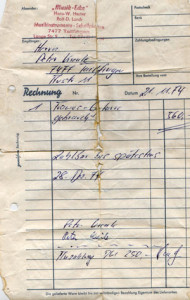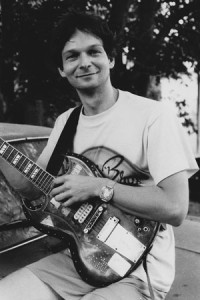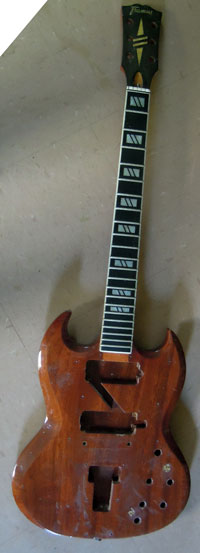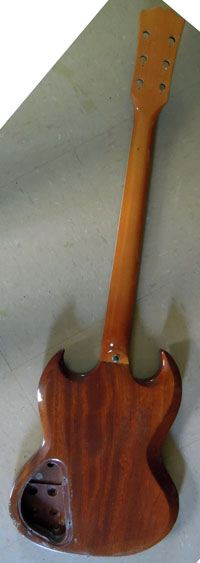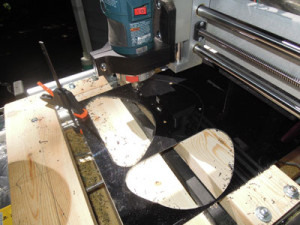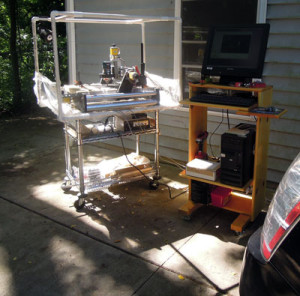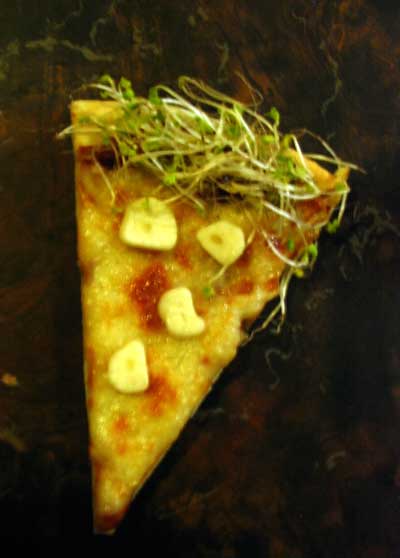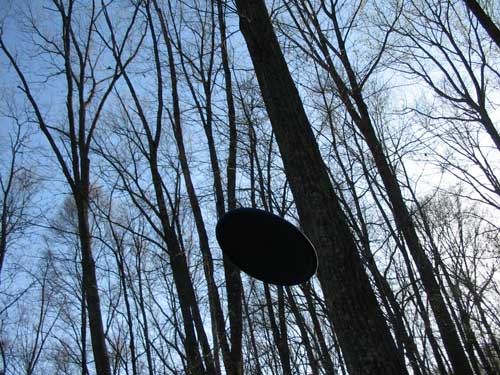 How could I ever try to become a jazz guitar player? I tried, hard, for quite a while. But, unnoticed by me, at first, and in the last few years becoming more and more obvious, I drifted away from what I thought I had wanted to be. People blame the strangest reasons for picking up an instrument. Over all, my reasons weren’t all that weird.
How could I ever try to become a jazz guitar player? I tried, hard, for quite a while. But, unnoticed by me, at first, and in the last few years becoming more and more obvious, I drifted away from what I thought I had wanted to be. People blame the strangest reasons for picking up an instrument. Over all, my reasons weren’t all that weird.
I never had any inclination that I wanted to play guitar or become actively involved in making music of any kind before age 12. On the other hand when I received my first cassette tape recorder and was able to record the few songs that drew my attention off the radio I used the music as backdrop to the LEGO sets I was building. Strangely, the songs I recorded were not the ones most of my friends were listening to. No Rolling Stones or Beatles. I gravitated towards instrumental stuff that sounded mysterious and that had a certain cinematic or SciFi quality.
Just around that time my friend Klaus introduced me to “Dark Side Of The Moon” by Pink Floyd when I was about 13. After he had made me a cassette copy of his brother’s album copy that became my sound track for a while. During that time we wanted to make a science fiction movie. At first “Dark Side….” was to be our main musical material (screw copyright). In the process we noticed that we didn’t want to use the parts that had vocals which of course narrowed the usable material down somewhat. Eventually we decided we would not only make our own movie but also record the music to it – not withstanding the fact that Klaus only played some classical piano and I had never played any instrument at all.
In the research for music to use for our movie we had stumbled upon earlier records of Pink Floyd. In particular the double album “Umma Gumma” which changed my life forever. When you read what the critics said about this strange collection of live and studio tracks you would probably skip it. For me the disc that contains the four live tracks was an eye (or ear) opener of the third kind. The song “Careful with that axe, Eugene” has no lyrics, no hook, no chord changes, just a barebones bass line. It doesn’t even have a melody as such. All it does is slowly build up to a loud scream of Mr. Waters followed by a haunting guitar solo by David Gilmour in which he sings along with what he plays. After ten minutes or so the song just quiets down and ends. But for me this was music to paint pictures by in my mind. There was so much texture and to me it sounded so ‘organic’ and not forced into a form. Each time I listened to it different stories played out in my mind. Admittedly, the fertile mind of a teenager. But still, other music just would not have that same effect. Vocal music just seemed to stifle the imagination because the lyrics told you what to think. One of my other favorite bands from that time was “Yes”. While there were lots of lyrics in their music the words seemed to have a rather different purpose than those of the Top Ten tunes of the time. And for a budding guitar player/musician there was lots of interesting material in the music of “Yes”. But “Careful with that axe, Eugene” had an emotional arc which I have been searching for in all the music I have listened to since but it is a rare quality. And of course it became my prime motivation to make that music myself – except that I seemed to be the only one with that desire in my hometown.
Instrumental music? No hooks? Just really strange music? Lots of it improvised? Not where I grew up!
And what is ‘Instrumental’ and ‘Improvised’ often associated with? Jazz! And so, slowly at first, but with growing guitaristic abilities more and more I began drifting away from my fantasy of playing in a “Careful With that Axe….” way. Not surprisingly I found my way into jazz through the unmarked backdoor of Miles Davis’ “Bitches Brew” and other less traditional recordings that for me had that “Careful with that axe” feel.
As mentioned before, the property that most attracted me to music is the ‘blank canvas experience’. Where this comes from I don’t know. But early on when I started taking photographs I always got criticism because my shots seemed to look at landscapes, buildings, scenes but rarely people (which was of course very annoying in pictures taken at family gatherings). Also, a big portion of SF books I own I bought because the cover art appealed to that same instinct. There were big mysterious cities, spaceships drifting in space, or other awe inspiring scenes – perfect backdrops to imagine a story. The other ‘music’ (and I have a hard time calling it that sometimes) that was sort of fascinating to me at that time was the emerging branch of electronic space music, specifically Tangerine Dream. Although that interest faded relatively quickly – only to re-emerge decades later with the accidental discovery of a ‘space musician’ by the name of Steve Roach.
But remember, I was already a guitar player and most young guitar players are pretty competitive. It seemed almost natural for me to become interested in bands like Weather Report or Mahavishnu Orchestra whose leading members came straight out of the “Bitches Brew” corner. While Mahavishnu fascinated me with a totally alien, otherworldly musical language Weather Report provided the danceable funky grooves and memorable melodies. I didn’t know back then that this music was called jazz (well, ok, jazz-rock). Until somebody dragged me to see a ‘real’ jazz concert – which happened to be the Modern Jazz Quartet. I must have been 16 or so. It felt more like a classical recital. I knew it was well played, good music, and I could certainly appreciate it at that level but it didn’t touch me at all. At that time I did go out and see many live concerts, though. One of my favorite live bands at the time was the German rock group Embryo. My first ‘big’ concert was Klaus Doldinger’s Passport. It was very groovy – I always liked drummers and Fender Rhodes piano. A year or so later I saw Weather Report in Munich and the show just blew me away. It was everything that Modern Jazz Quartet hadn’t been. And yet, the people at Jazz School Munich told me one was real jazz and the other just a cheap ripoff (although every bass player I knew had a Fender bass with the frets removed in a back room somewhere).
And so I gradually drifted away from my “Eugene” inspired beginnings. Driven by the ambition to become such a good guitar player that everybody would call me to play in their band and by the non voluntary recognition that my earlier vision of how I wanted to perform music was a bit unrealistic. Over the years I became a reasonably capable jazz guitarist and composer. After our move to the US I even started to work regularly in clubs and with many different people. But that “Eugene” spark has always come through on my recordings. The resistance to ‘just’ record a few standards with long solos never went away. And then, just a few months ago, I listened to a live version of “Careful With That Axe” on youtube. Of course I knew that this stuff is out there today. But it’s a bit like thinking about “Dark Side Of The Moon” – I just think of it and I can hear the music in my mind. Emotional impact. And yet, that youtube version of “Careful…” was a little different. Same mood, same basic structure but also some different chords on the keyboard, Gilmour’s solo is different – in short, it sucked me in just like 35 years ago. It also reaffirmed my suspicion that I really never wanted to become a jazz player.

